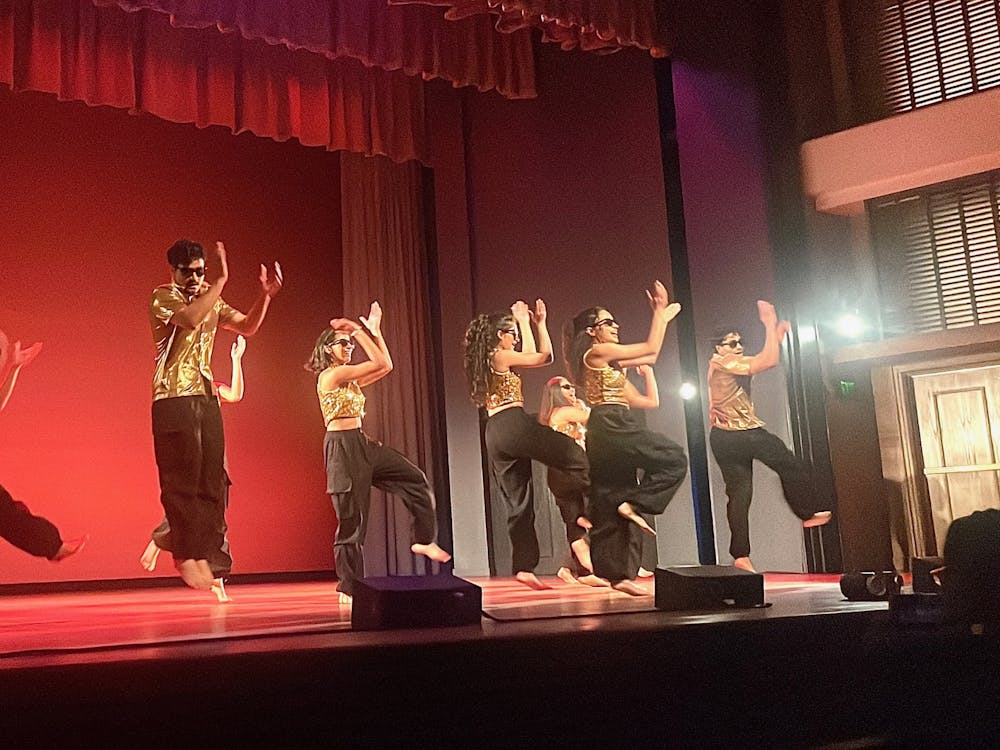A microphone, pair of headphones, editing software and an old-school voice recorder or computer are essential for a podcast starter kit. But what keeps listeners interested and waiting for the newest episode drop? Ears. They are the most important piece of equipment.
Julia Barton, a Pulitzer Center grantee who has worked as executive editor of Pushkin Industries, joined 30 students in the Brown Alley Room at the University of Richmond on Monday, March 24 for a talk titled: “The Hidden Grammar of Audio Stories.”
The talk comes as UR has been growing its multimedia journalism presence on campus. In 2023, the university introduced its first multimedia-focused journalism professor, Andrew Grace, who is the producer and co-host of NPR’s “White Lies.”
For Barton, podcast editing takes three steps: restructure, revise and reinforce.
“I listen, notice my reactions and I think about what needs to happen to solve the problem, or to reinforce the good stuff,” Barton said. “Whatever it is, you already all have the skill.”
Her creative editing process focuses on grabbing the attention of the listener. According to what Barton calls her “wheel of pain,” feelings of boredom, impatience, distraction, and confusion may mark the end of a listening session.
Barton explained that parasocial relationships are key to pulling listeners in. The brain thinks of the podcast host as a friend, much like the relationship formed with music artists or a fictional character.
“We have to put ourselves in the place of the potential listener,” Barton said. “Are all these cylinders firing?”
The connection between host and listener changes based on the podcast format, such as listener-focused narrative podcasts or interview, chat or live-show conversation podcasts.
Students used their own piece of audio equipment, their ears, to listen to a series of podcasts, ranging from the Barton-edited “Cautionary Tales” with Tim Harford, to “Vibe Check” and The New York Times’ “The Daily.” Barton told students to hear out how the podcast host forms a connection with the listener. When the podcast clips finished, she asked, “So, are you in? You want to listen?”
She then raised the question: How do you write for the ear? It’s simple. Write subject-verb statements, short sentences, introduce miniature stories and avoid “bait and switch” cleverness, cliché’s and to-be statements. You don’t want to be more excited about your dishes than the podcast you’re listening to while doing the dishes, she said.
Barton then played “Neither Confirm Nor Deny,” a podcast episode from Radiolab. The episode’s format is always changing, filling in the narration with voice memos or moments out in the field, creating a pleasurable experience for the listener, an experience with “sparkle.”
Enjoy what you're reading?
Signup for our newsletter
“All of these elements are constantly working in a series like Radiolab and it’s useful to know about the formats,” Barton said.
Other than writing clear, short sentences and avoiding cliches, one audience member asked how top-chart podcasts keep listeners coming back.
Podcasts like “The Daily” are heavily edited, Barton said. She explained the importance of time.
“They use radio’s ability to annihilate time and space,” she said. “It’s an aesthetic.”
At the end of the talk, one student mentioned Pushkin’s “McCartney: A Life in Lyrics” episode.
“Where do you pick up on the storylines that you want to carry through?” they asked.
“You take it out for a walk,” Barton said.
As an editor, her career is to experience the episode as a listener, noticing the interesting bits, but also the bits that hit a dead end. She looks for the “North Star” in a piece, the direction she wants the episode to go in.
“When you are building your own stories or listening, you can ask yourself: How am I being addressed? What’s going on here? Why do I like it? Or why do I not like it?” Barton said.
Listening, honing in your ear and asking yourself these questions are what make up “The Hidden Grammar of Audio.”
Contact news editor Ava Jenks at ava.humphries@richmond.edu
Support independent student media
You can make a tax-deductible donation by clicking the button below, which takes you to our secure PayPal account. The page is set up to receive contributions in whatever amount you designate. We look forward to using the money we raise to further our mission of providing honest and accurate information to students, faculty, staff, alumni and others in the general public.
Donate Now



